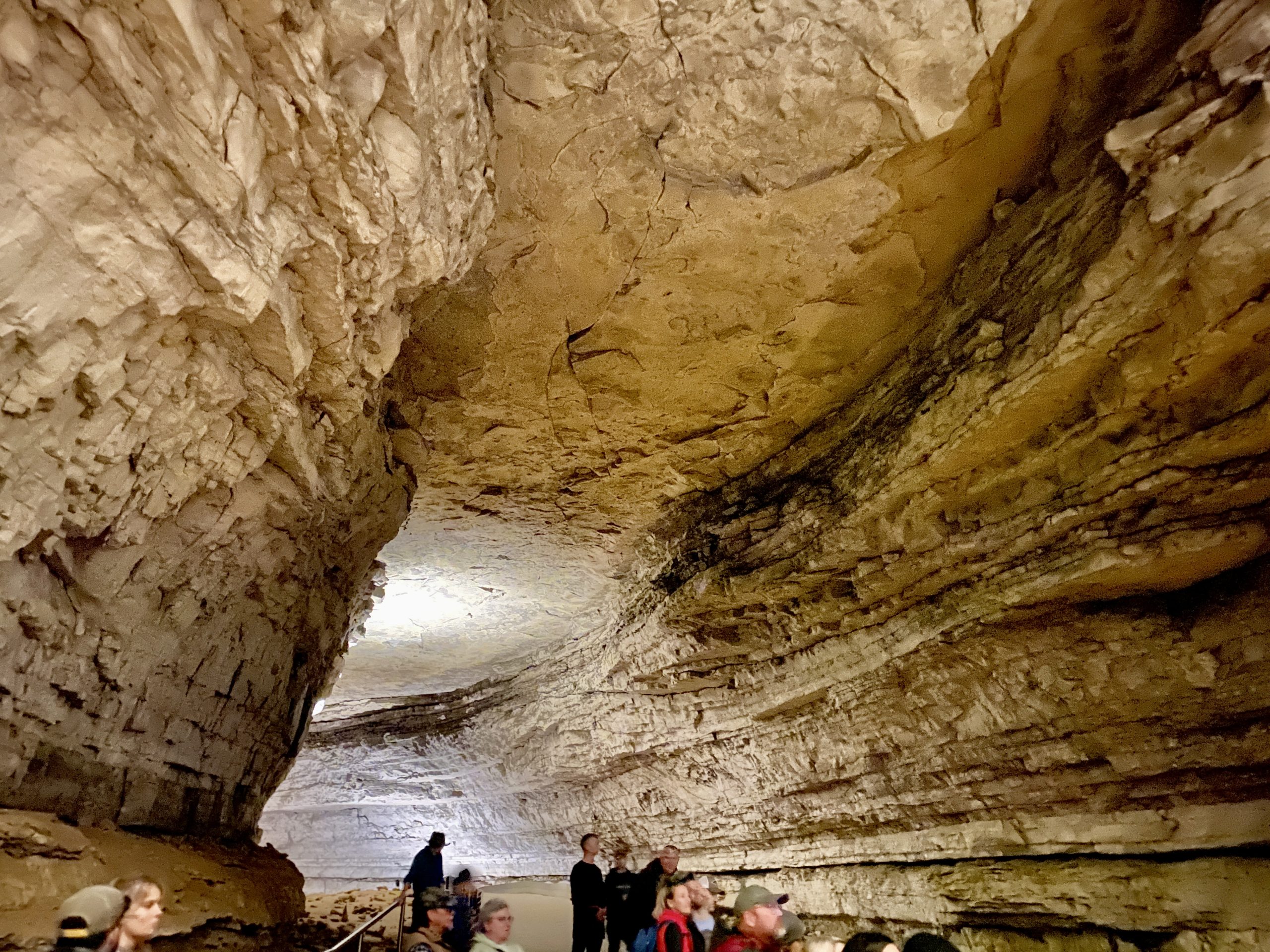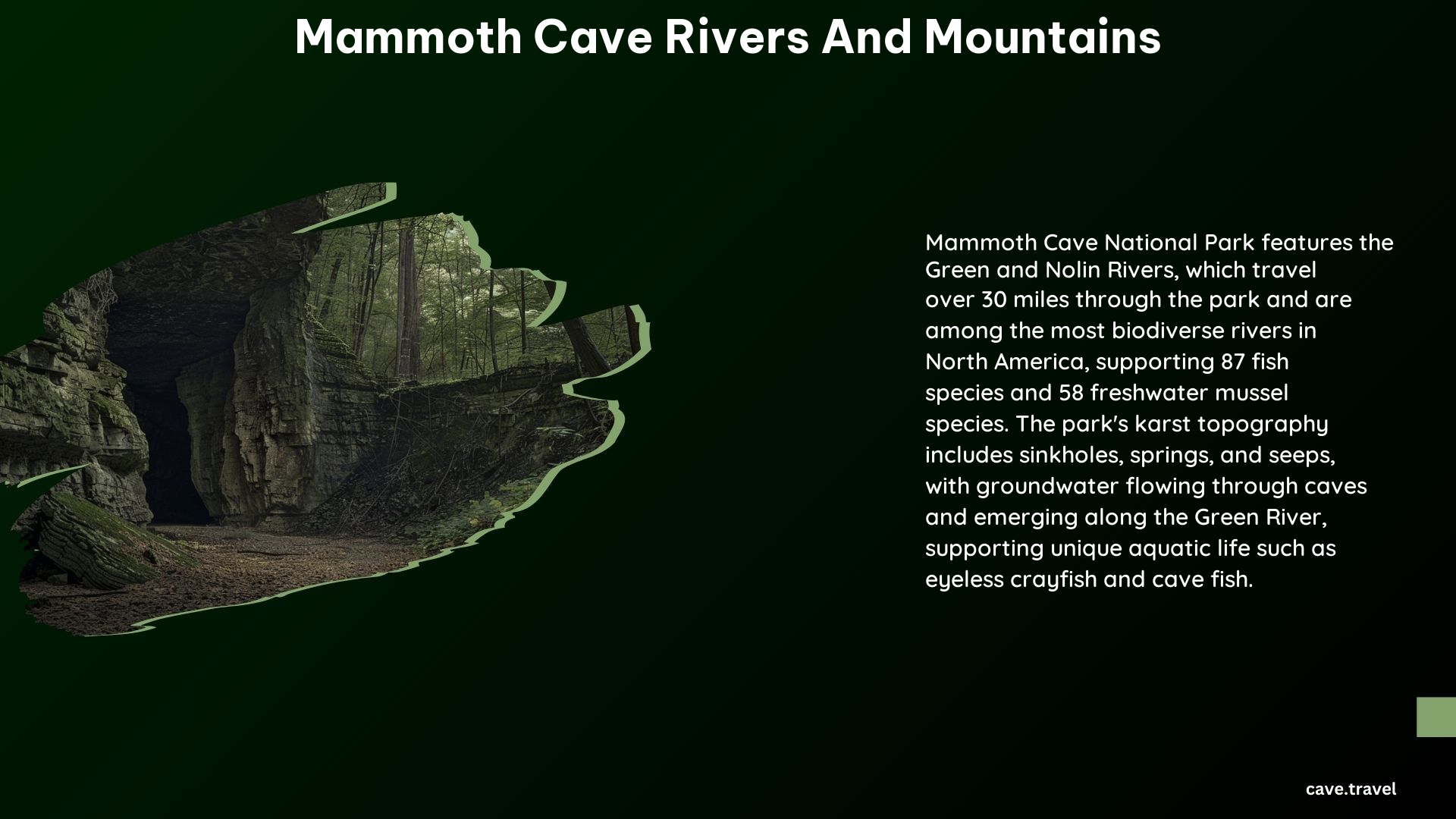Mammoth Cave National Park is a captivating destination that offers visitors a unique opportunity to explore the intricate network of rivers, springs, and mountains that have shaped the region’s remarkable geological history. From the meandering Green River to the towering Brooks Knob, this park is a true natural wonder that showcases the incredible diversity of Kentucky’s landscape.
The Waterways of Mammoth Cave

The Green River
The Green River is the primary waterway that flows through Mammoth Cave National Park, running for over 30 miles within the park boundaries. Designated as an “Outstanding Resource Water” by the state of Kentucky, the Green River is renowned for its exceptional biodiversity, supporting approximately 87 species of fish and 58 species of freshwater mussels.
The Nolin River
Another significant river in the park, the Nolin River is known for its scenic valleys and diverse aquatic life. Draining into the Green River, the Nolin River is home to a variety of fish and mussel species, contributing to the park’s rich ecological tapestry.
Springs and Seeps
Mammoth Cave National Park is also home to several important springs and seeps that play a crucial role in the park’s hydrological network. The River Styx Spring, Echo River Spring, and Turnhole Bend Spring are all significant sources of water that support the Green River and its surrounding ecosystems.
The Mammoth Cave Plateau

Brooks Knob
The highest and most prominent mountain in the park, Brooks Knob stands at 853 feet (260 meters) above sea level, offering visitors breathtaking views of the surrounding landscape.
Joppa Ridge
Joppa Ridge is one of the three northwest-trending ridges that make up the Mammoth Cave Plateau. Capped by an impermeable sandstone layer, this ridge contains extensive cave passages that have been shaped by the park’s geological history.
Mammoth Cave Ridge
Another part of the Mammoth Cave Plateau, Mammoth Cave Ridge is known for its diverse geological formations and extensive cave passages.
Flint Ridge
The third ridge that makes up the Mammoth Cave Plateau, Flint Ridge is also capped by sandstone and contains the longest known linear cave system in the world.
The Geological History of Mammoth Cave
Cave Formation
The caves in Mammoth Cave National Park began forming around 10 million years ago when groundwater started dissolving the limestone bedrock. This process continued over time, with the Green River carving out larger karst formations.
Speleothems
The caves are filled with a variety of fascinating subterranean formations, including stalactites, stalagmites, helictites, evaporites, and travertine dams, which form when minerals from groundwater are deposited in the limestone.
Fossils
The caves of Mammoth Cave National Park contain a wealth of fossils, including those of gastropods, blastoids, crinoids, and even an ancient shark species similar to the great white shark.
Exploring Mammoth Cave National Park
Visitor Center and Trails
The park’s visitor center offers information and reservations for guided tours and self-guided adventures, while the over 60 miles of backcountry trails and 18 miles of trails on the south side of the Green River provide ample opportunities for hiking and exploration.
Guided Tours
Mammoth Cave National Park offers a variety of guided tours, including the Discovery Self-Guided tour and the Accessible Tour, catering to the diverse needs and interests of visitors.
Climate and Ecology
Climate
Mammoth Cave National Park has a humid subtropical climate, with average summer highs of 88.1°F (31.2°C) and winter lows of 25.2°F (-3.8°C). The area receives an average annual rainfall of 50.92 inches (1,293 mm) and has a relative humidity of 68.8%.
Ecosystems
The park contains a mosaic of different ecosystems, including oak/hickory forests and diverse aquatic habitats, supporting a wide range of plant and animal species.
Conservation Status
UNESCO World Heritage Site
Mammoth Cave National Park was designated a UNESCO World Heritage Site in 1981, recognizing its outstanding universal value and the importance of its conservation.
International Biosphere Reserve
The park was also designated an International Biosphere Reserve in 1990, further highlighting its ecological significance and the need for sustainable management.
Mammoth Cave National Park is a true gem of Kentucky, offering visitors a chance to explore the remarkable geological wonders that have shaped the region over millions of years. From the meandering rivers to the towering mountains, this park is a testament to the incredible diversity and beauty of the natural world.
References
- https://www.nps.gov/maca/learn/nature/waterways.htm
- https://www.nps.gov/maca/index.htm
- https://www.nps.gov/parkhistory/online_books/maca/master_plan/sec2.htm
- https://peakvisor.com/park/mammoth-cave-national-park.html
- https://en.wikipedia.org/wiki/Mammoth_Cave_National_Park
